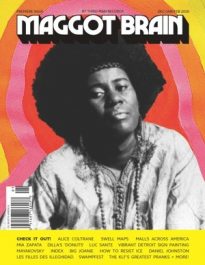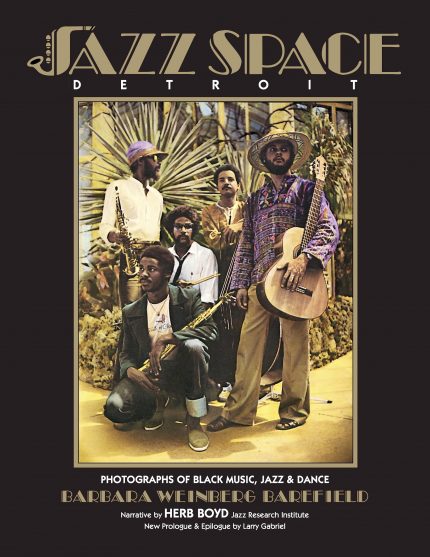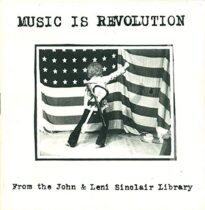
Before Motown: A History of Jazz in DEtroit 1920-60
When most people think of Detroit and music, they think of the Motown sound. But what many people forget is that Detroit has a remarkable jazz history, which became a major influence in what came to be known as the Motown sound.
Before Motown is the first book about the history of jazz in Detroit. It shows the significant impact Detroit has had on the development of jazz in America, with its own sound, distinct from that of the other jazz centers of Chicago, New Orleans, St. Louis, or Kansas City. Starting with the big bands in the 1920s,with groups like the McKinney’s Cotton Pickers and Jean Goldkette’s Orchestra, and continuing into the 1950s, Detroit experienced a golden age of modern jazz centered around clubs like the Blue Bird Inn. That jazz scene comes alive in interviews with musicians and club owners, combined with unique period photographs and advertisements. In addition, Detroit’s vital jazz scene is placed in its social context, particularly within the changing relations between blacks and whites at the time.
Long overdue, Before Motown tells the story of Detroit jazz as it really happened, told by the people who lived it. More importantly, it shows how life can mirror art in the most pragmatic of American cities, Detroit.
Lars Bjorn is Professor of Sociology, University of Michigan, Dearborn, and the author of numerous articles and publications about jazz.
Jim Gallert is Vice President of the Jazz Alliance of Michigan and a veteran jazz broadcaster. He has been involved with the Detroit jazz scene for over twenty-five years.
This scholarly look at the history of Detroit jazz is the work of college professor Bjorn and influential disc jockey Gallert, who 30 years ago was influential in shaping my love of the music with his Jazz Yesterday radio show on WDET-FM. In the course of a bit over 200 pages, the authors offer a well conceived and executed overview of a 40-year period that was arguably the most developmentally fertile in pre-Motown Detroit. Throughout these riveting pages, the reader is introduced to both well-known and obscure musicians who shaped jazz in Detroit — and in many cases the rest of the world. Though the relevance of the subject to non-Detroiters might be called into question, the reader is asked to consider the wealth of world-class players who developed their proficiency and ultimately their reputations in this fruitful environment.
The authors provide foundational facts relative to historical race relations in the city, geographic boundaries and important landmarks before launching into the subject at hand. Early black society bands, like those of Theodore Finney and Leroy Smith, are examined, as are some nascent attempts at the forming of jazz bands. The second chapter begins to make a case for the importance of Detroit-bred jazz on a broader national stage with the introduction of McKinney’s Cotton Pickers and the Jean Goldkette Orchestra (home to Bix Beiderbecke, Frankie Trumbauer, Jimmy and Tommy Dorsey and Joe Venuti), in the 1920s. While the Cotton Pickers boasted the arranging talents of Don Redman, formerly of the Fletcher Henderson band, they were certainly a band up to the task and deserving of the accolades. When Redman left, Benny Carter took over the chief arranging duties. (It was here the saxophonist added trumpet to his repertoire). Consequently, the Detroit-based big band was briefly one of the most popular in the land.
By the 1930s, the Black community in Detroit called Paradise Valley home. This was reportedly a bustling city-within-a-city that boasted theatres such as the Greystone and the Paradise (which saw 40,000 come out in one 1942 week to see Cab Calloway), along with a slew of hoppin’ nightspots dotting the landscape. Places like Sportree’s, the Forest Club, the Bandbox, Club Plantation and the Palm Garden Café were alive with this new music. Drummer J.C. Heard got his start here, as did blues singer Alberta Adams. Pianist Milt Buckner (later with Lionel Hampton and others) played the Valley as a teenager. — Jazzlife, online review
$ 24.95
In stock



